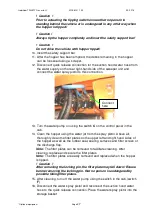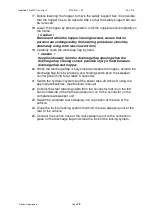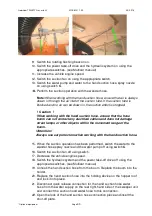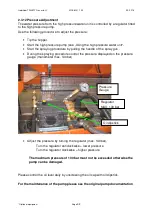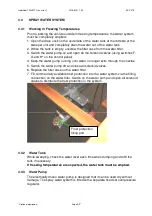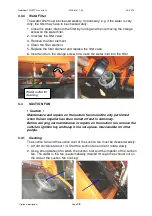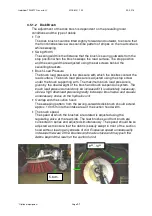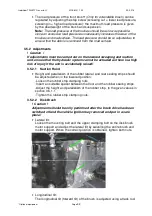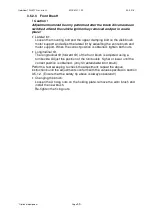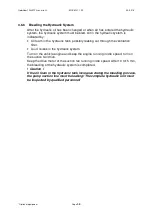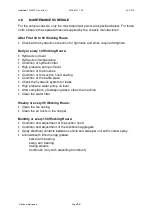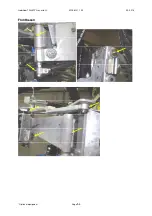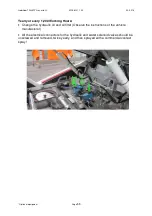
Gebrüder TRILETY Ges.m.b.H.
MCK-M31 1.02
09/ 2018
* Optional equipment
Page
41
3.5.1.2 Disk Brush
The adjustment of the disk brush is dependent on the prevailing local
conditions and the type of debris.
•
Tilt:
The disk brush should be tilted slightly forward and outward, to ensure that
the front bristles leave a crescent-like pattern of stripes on the road surface
while sweeping.
•
Swing Width:
The swing width is the distance that the brush is swung outwards from the
stop position when the brush sweeps the road surface. The stop position
and the swing width are adjusted using the set screws behind the
swivelling brackets.
•
Brush Load Pressure
The brush load pressure is the pressure with which the bristles contact the
road surface. The brush load pressure is adjusted using the stop screw
under the brush supporting arm. The maximum brush load pressure is
given by the dead weight of the brush and brush suspension system.
The
brush load pressure should only be increased if it is absolutely necessary,
since a high download pressure greatly increases brush wear and causes
unnecessary stress on the hydraulic unit
•
Overlap with the suction hood:
The sweeping pattern from the swung-outwards disk brush should extend
approx. 100 mm into the intake area of the suction hood width.
•
The brush speed
The speed at which the brushes are rotated is adjusted using the
regulating valve at the rear side. The rear brushes and front brush are
connected in series and adjusted simultaneously. The speed should be so
adjusted as to ensure that the debris is easily swept in front of the suction
hood without leaving any streaks of dirt.
Excessive speed unnecessarily
increases the wear of the brushes and road surface and may push the
debris beyond the reach of the suction hood.
5-6cm.
9
00
...14
00

